Glass L - Q
L - Laboratory glass
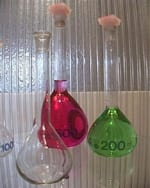
L for laboratory glass show the products of the "Glaswerk Wertheim" (1950 - 1994) and the laboratory glass industry in Wertheim that still exists today.
L - Lenses, magnifying glasses, moving light
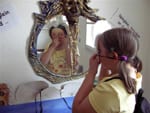
L for "Lenses, magnifying glasses, moving light": Here everything revolves around the topic of "mirrors and optics". Not only kids and teens but also curious adults have fun at the various play and experiment stations:
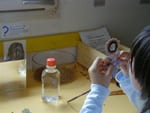
Mirror cabinet
Mirror, Mirror ....
Mirror cabinet
Monster bottles
Flea microscope
Eye test
Colour prism
and much more
The glass play stations were set up together with the Ochsenfurt play construction site, Würzburg-Kist.
More glass under L:
Levels (spirit level)
M - Measuring with glass
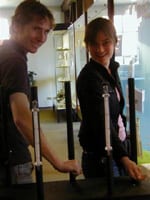
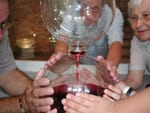
M for "Measuring with glass": Do you know which measuring device the housewife or scientist uses and how it works? Find out!
Thermometer
Barometer
Fat and sugar meter (butyrometer, saccarimeter)
Alcoholometers
Spirit levels
Love thermometers and much more
Incidentally, the first glassblowers to come to Wertheim from Thuringia after the Second World War were thermometer glassblowers.
The glass play stations were set up together with the Ochsenfurt play construction site, Würzburg-Kist.
M - Marbles
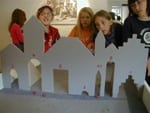
M for marble games, alone or in pairs, clicking goals or balancing the marble in the middle with team spirit on the large marble board ... everything can be tried out at the Wertheim Glass Museum.
"Marbles ... are as precious to Roman children as gold is to adults." (Augustine)
N - Natural glass (see "A - Beginning of the glass")
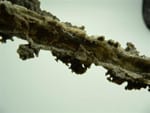
N for Natural glass like this fulgurite (lightning tube) is formed by lightning strikes in sand deserts or sand lakes and is very rare.
Other natural glasses under "A - beginning of glass": opals, obsidian, tektites (glass meteorites).
N - Natural gemstones (see "Beginning of the glass".
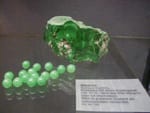
N for Natural gemstones were once supposed to protect the owner and were considered a sign of wealth and prosperity.
Pearls were among the first objects made of glass. They were meant to imitate natural gemstones made of precious materials such as gemstones, gold and silver.
O - Opaque glass
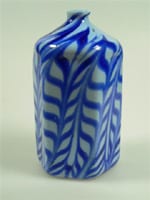
O for opaque glass is a non-transparent, that is, opaque glass, colored glass used by glassmakers before the invention of "decolorization" of glass under the Romans. From opaque glass today glass artists make a wide variety of art objects (see " S - studio glass").
More glass under O:
Optical glass for spectacles, lenses, scientific instruments, etc.
P - Pressed glass
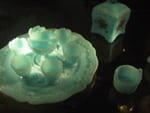
P for pressed glass originated in the USA at the beginning of the 19th century through mechanical pressing in moulds. The production method was cheap and fast and particularly suitable for household and industrial glass.
Today, pressed glasses are coveted collector's items.
More glass under P:
Prisms, periscope (periscope)
Q - Mercury thermometer
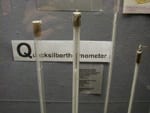
Q for mercury thermometers are among the first products of the Wertheim glass industry - until today. However, precision thermometers like the one in Wertheim could only be manufactured when Otto Schott (1851 - 1935) developed measuring instrument glasses with low thermal expansion and high measuring accuracy.
Q - Quartz sand (see "Scientific glass cabinet")

Q for quartz sand is the main raw material for glass production.
"Take 60 parts sand, 180 parts ash
and 5 parts chalk,
heat the whole and you get glass."
Oldest known glass recipe on a clay tablet from the library of Assurbanipal (669 to about 627 B.C.)